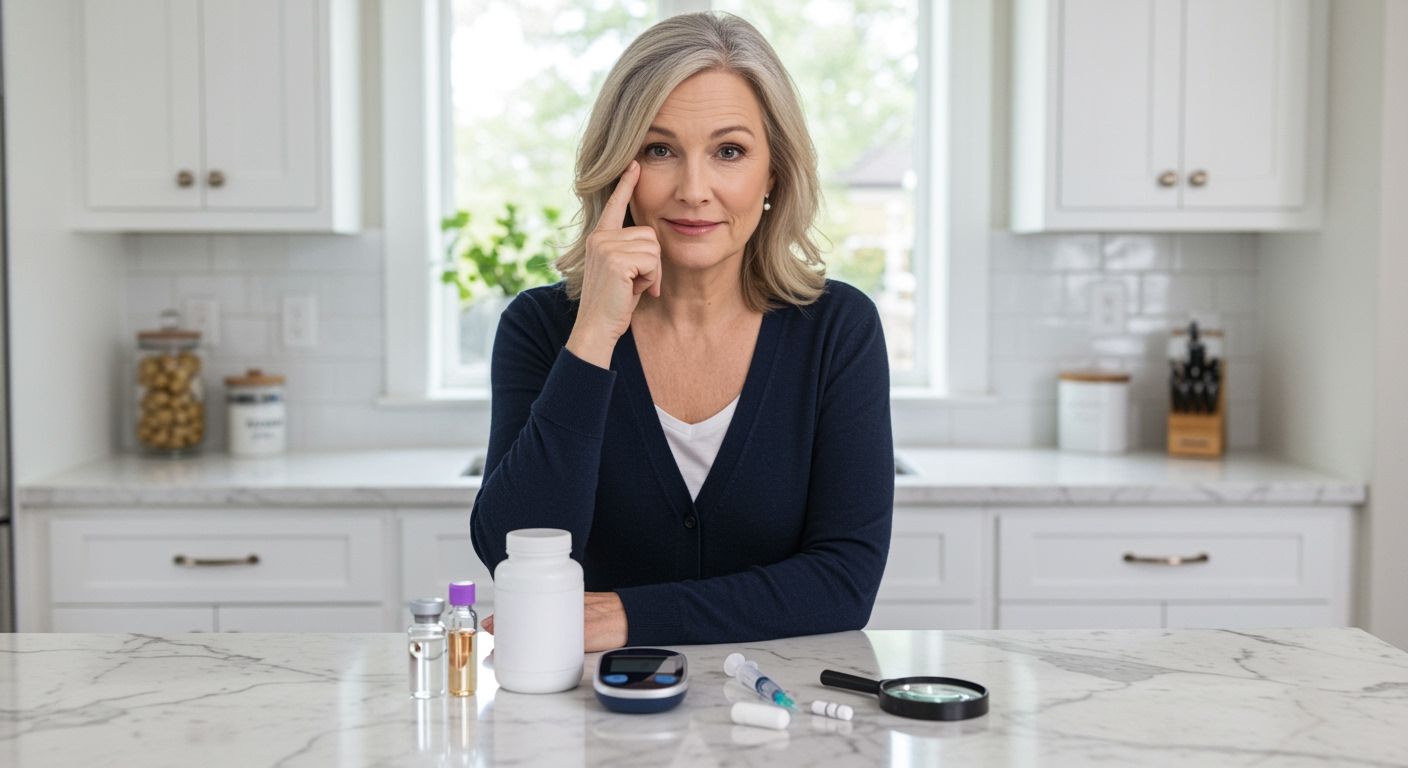✪ Key Highlight: Tears closely match blood glucose levels while saliva shows promising links to vitamin D status in breakthrough research.
Introduction
Imagine never needing another painful blood test to check your diabetes or vitamin D levels.
Scientists have discovered that tears and saliva could replace traditional blood tests for monitoring these crucial health markers.
Hi, I’m Abdur, your nutrition coach and today I’m going to analyze this groundbreaking research that could transform how we monitor diabetes and vitamin D deficiency.
What Makes This Discovery So Important?
This research published in the journal Physiologia represents a major breakthrough in medical testing.
The study found that tears accurately reflected blood glucose levels in people with type 2 diabetes.
Meanwhile, saliva showed strong connections to vitamin D status in the body.
Type 2 diabetes affects nearly 400 million people worldwide who need regular blood sugar monitoring.
These patients often require multiple blood tests per day, causing pain and inconvenience.
The new testing method could eliminate this discomfort while providing equally accurate results.
✪ Fact: Current diabetes patients may need to prick their fingers 4-8 times daily for blood glucose monitoring.
How Do Tears And Saliva Compare To Blood Tests?
The research team compared glucose concentrations in tears, saliva, and blood samples from the same patients.
Tears showed the most promising correlation with blood glucose levels.
This means tear glucose levels rise and fall in sync with blood glucose changes.
For vitamin D testing, saliva demonstrated significant potential as a replacement for blood analysis.
Vitamin D deficiency affects billions of people globally and links to heart disease, autoimmune disorders, and metabolic problems.
Currently, doctors rely exclusively on blood tests to measure vitamin D levels, which requires needle punctures and laboratory processing.
The saliva-based approach could make vitamin D screening more accessible and comfortable for patients.
✪ Pro Tip: Vitamin D helps your body absorb calcium and supports immune function beyond just bone health.
What Are The Technical Challenges?
The main challenge lies in the concentration differences between blood and other body fluids.
Glucose and vitamin D levels in tears and saliva are much lower than blood levels.
This requires extremely sensitive testing equipment to detect these smaller amounts accurately.
Scientists have developed special sensors and devices to measure glucose and other biomarkers in saliva.
However, these technologies are still being tested and improved for clinical use.
Another challenge involves interference from other substances in saliva that can affect test accuracy.
Researchers are working to overcome these technical hurdles to make the tests reliable for everyday use.
✪ Note: The biomarker 1,5-anhydroglucitol in saliva shows promise for diabetes screening without blood draws.
Could This Change Diabetes Management Forever?
Dr. Jonathan Little from UBC Okanagan explains that early detection through saliva tests could identify diabetes risk before blood sugar rises.
This means people could receive lifestyle interventions and treatments much earlier in the disease process.
Early intervention significantly improves outcomes and prevents serious diabetes complications.
The research team found that saliva tests could predict future risks for diabetes and obesity without blood samples.
This breakthrough could revolutionize preventive healthcare by making screening more accessible and comfortable.
Patients would no longer need to fear needle pricks for routine monitoring.
Home testing devices using saliva or tears could allow continuous health monitoring without medical appointments.
✪ Fact: Type 2 diabetes develops when cells stop responding to insulin or the pancreas cannot produce enough insulin.
When Will These Tests Become Available?
These non-invasive tests are still in the early research stages and require further development.
Scientists need to improve the sensitivity and accuracy of the testing devices before clinical use.
The technology must also be adapted for portable home devices that patients can use independently.
Regulatory approval processes will require extensive clinical trials to prove safety and effectiveness.
However, the initial results are promising enough to warrant continued research investment.
Experts believe that with proper development, these tests could become available within the next 5-10 years.
✪ Pro Tip: Current diabetes management relies on HbA1c blood tests that show average blood sugar over 2-3 months.
The Bottom Line
This research represents a significant step toward pain-free health monitoring that could benefit millions of people worldwide.
The future of healthcare lies in making essential tests accessible and comfortable for everyone.
I would love to hear your thoughts about this breakthrough – do you think tear and saliva testing could improve your health monitoring experience?
References
At NutritionCrown, we use quality and credible sources to ensure our content is accurate and trustworthy. Below are the sources referenced in creating this article:
- News Medical: Can saliva and tears replace blood tests for vitamin D and glucose
- Pharmacy Times: Non-invasive saliva tests could offer early clues for diabetes and obesity risk
- PMC: Saliva-based biosensors for diabetes monitoring
- Greater Good: Could tears and saliva replace blood tests
- News Medical: Could vitamin D be the missing link in managing type 2 diabetes





